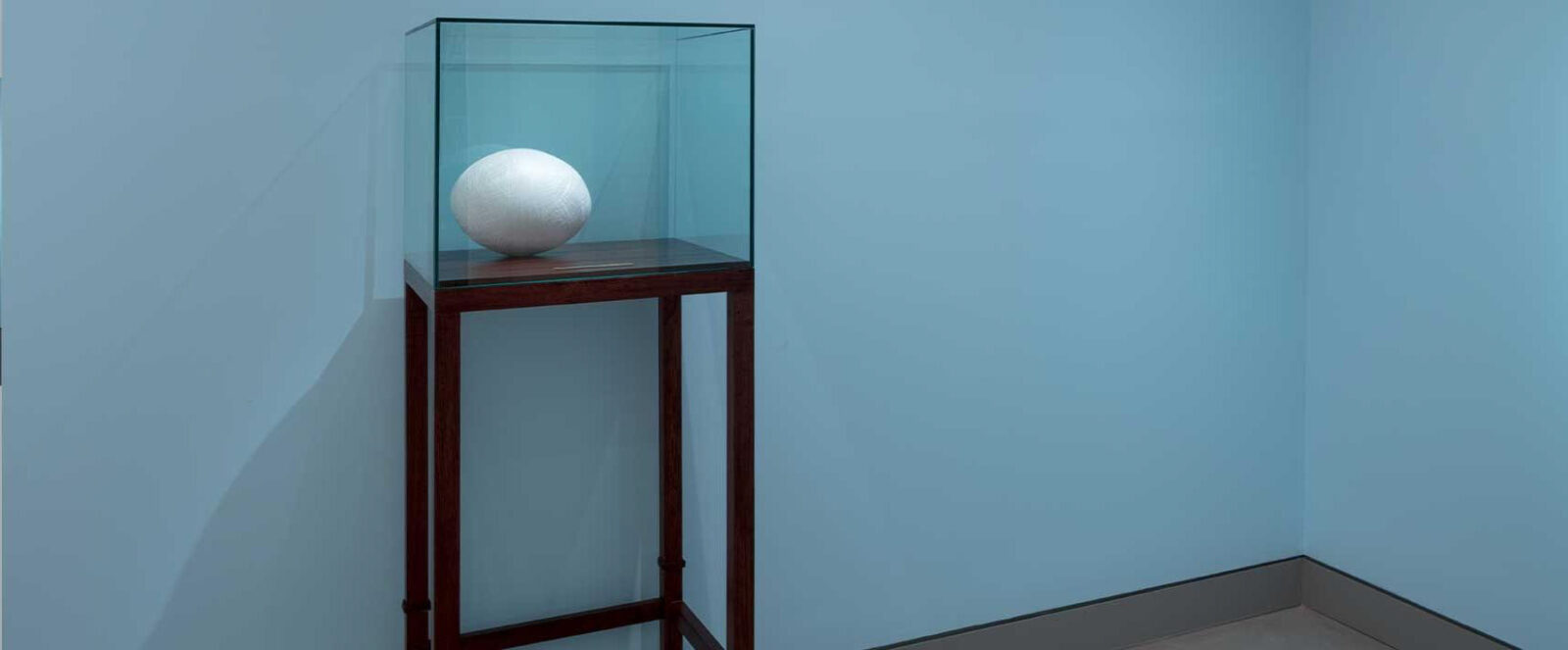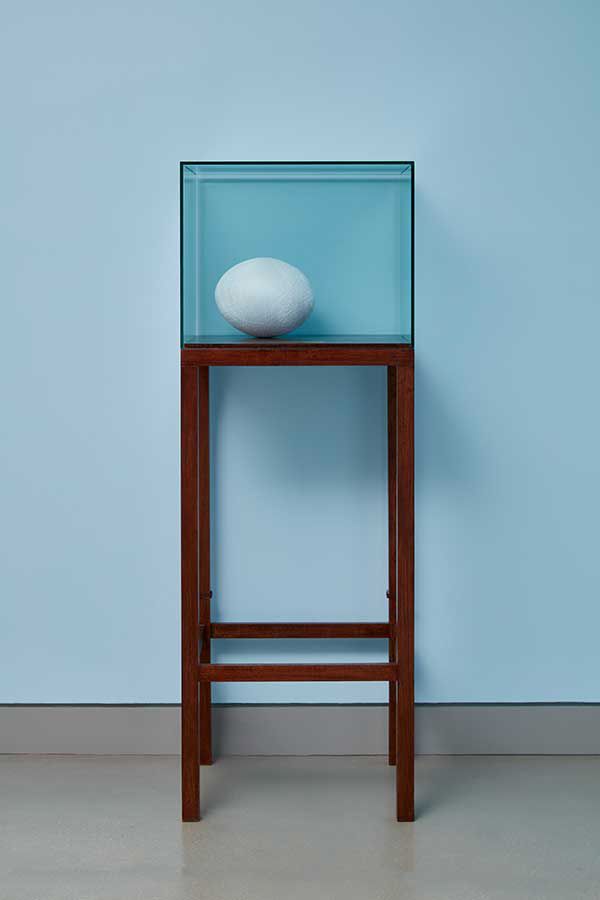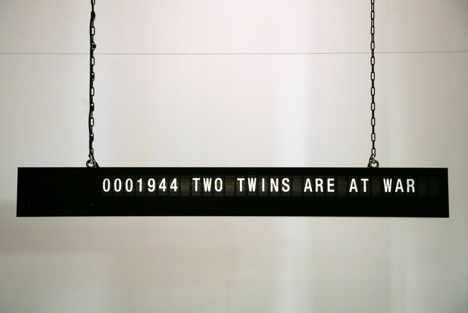
Installation view of Shilpa Gupta’s work in Measure Your Existence at the Rubin Museum of Art; photograph by David De Armas, courtesy Rubin Museum of Art

Installation view of Shilpa Gupta’s work in Measure Your Existence at the Rubin Museum of Art; photograph by David De Armas, courtesy Rubin Museum of Art
“It’s about inhabiting a space that is actually a shared space, and sort of collapsing the space between you and me—so that we are able to think together.” —Shilpa Gupta
The fleeting, impermanent here and now—in all its destruction, regeneration, and intense immediacy—is the ultimate reality. Measure Your Existence questions and expands on the Buddhist concept of impermanence through artworks by six contemporary artists who explore duration, memory, fate, history, loss, disappearance, reappearance, and repetition.
Each post in this series focuses on one artist, highlighting an artwork on view in the exhibition and another one from his or her oeuvre.
Shilpa Gupta explores the intersection of the social experiences of boundaries, change, and loss.

Shilpa Gupta (b. 1976, Mumbai, India; lives and works in Mumbai); 1:14.9 / 1188.5 Miles of Fenced Border — West, North-West / Data Updated: Dec 31, 2007; 2011–2012; polyester thread, wood, glass, and brass; photograph by Jason Wyche, courtesy Rubin Museum of Art
Gupta’s work 1:14.9 / 1188.5 Miles of Fenced Border – West, North-West / Data Updated: Dec 31, 2007 renegotiates and reimagines the political and social spaces of the partition between India and Pakistan. At the end of the British rule in India in August 1947, the British imposed the Radcliffe Line, a boundary between India and the new country of Pakistan. An estimated one million people died trying to cross the border, and seventy years later the hostility between the two countries continues.
When multiplied by the ratio in the title, the length of the thread wound into this oval-shaped object measures the distance of the fenced border between the two countries. The loss and disappearance of families and the home haunt Gupta’s process and choice of materials. The ephemeral nature of the thread and its geographical relationship to a specific place lend a sense of urgency to the viewer’s experience of the object.

Shilpa Gupta (b. 1976, Mumbai, India; lives and works in Mumbai); Untitled; 2008–9; motion flapboard 20 min. loop; 70.9 × 8.3 × 10 in. (190 × 21.8 × 25 cm); courtesy of the artist
In Untitled Gupta uses the imagery of travel to depict the splitting of India and Pakistan. A flap display device, normally used to show public transport schedules in airports or railway stations, displays fragments of words and phrases according to precise, deliberate timing, as if someone is manipulating the board in real time. Some of the words and phrases recount in a piecemeal fashion the aftermath of August 17, 1947, when the Radcliffe Line was established. Phrases include “WHY DO I REMEMBER?” and “0001947 BREATHLESS.”
Gupta transposes the destruction and chaos of the India-Pakistan Partition into poetic phrases, bringing the specificity of this location and place to a shared space that the artist, viewer, and object inhabit together. With both Untitled and <1:14.9 Gupta aspires to move beyond boundaries and propose new ways of seeing.
Gupta’s work 1:14.9 was on view in the exhibition Measure Your Existence at the Rubin Museum from February 7 to August 10, 2020.

Christine Starkman is a contemporary art curator interested in the global, transnational, and transcultural histories of modern and contemporary art between Asia, Europe, Latin America, and North America. She has been a curator at the Art Institute of Chicago, Cleveland Museum of Art, and Museum of Fine Arts, Houston. She has an MA in Japanese art and architecture from the University of Illinois, Urbana-Champaign, and did PhD coursework in art history at Rice University.
Get the latest news and stories from the Rubin, plus occasional information on how to support our work.